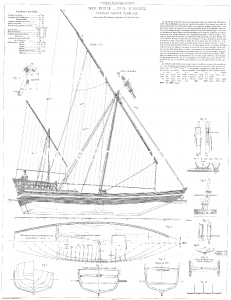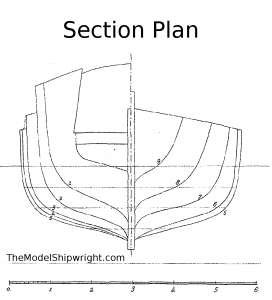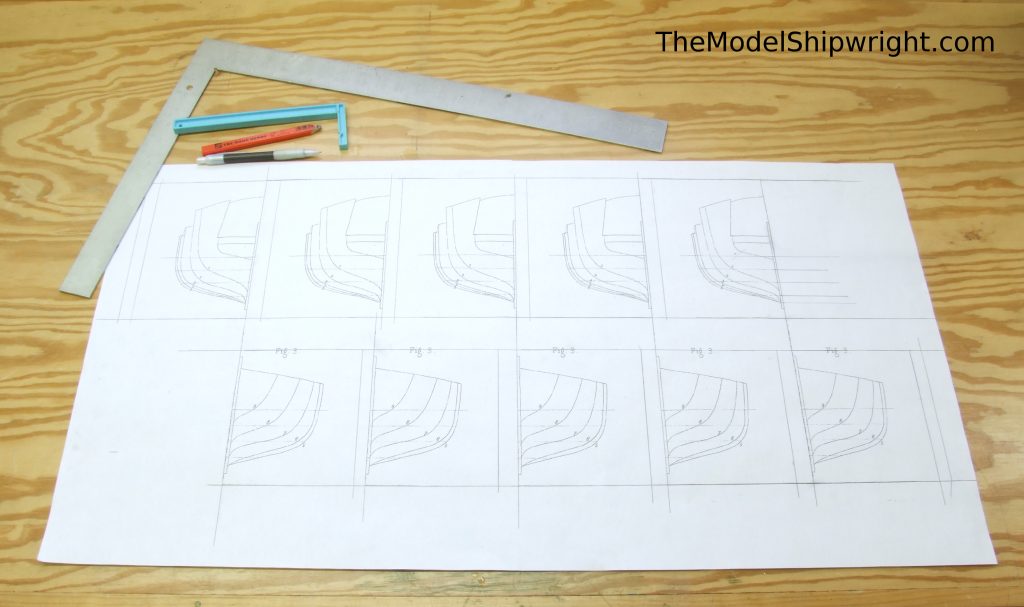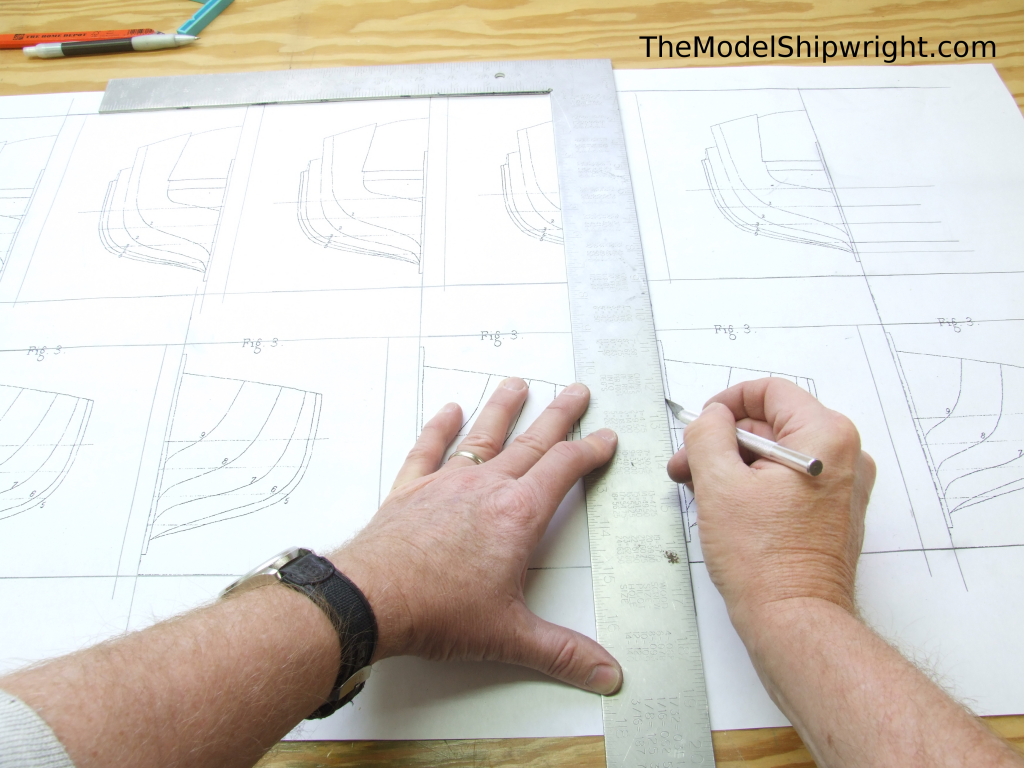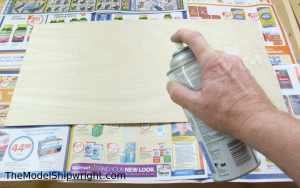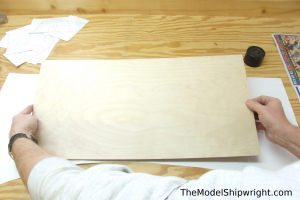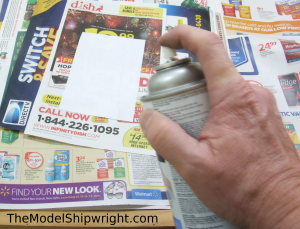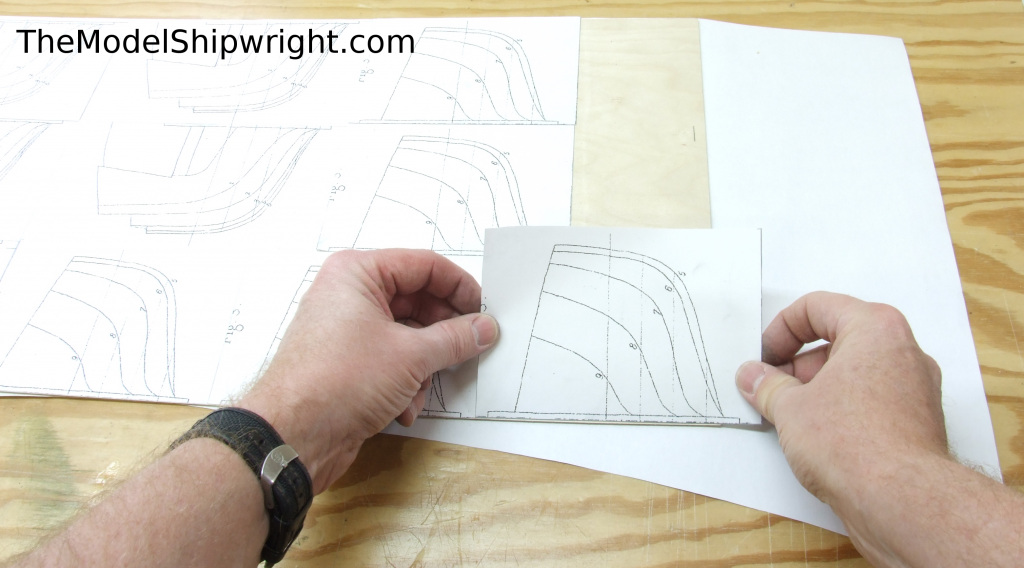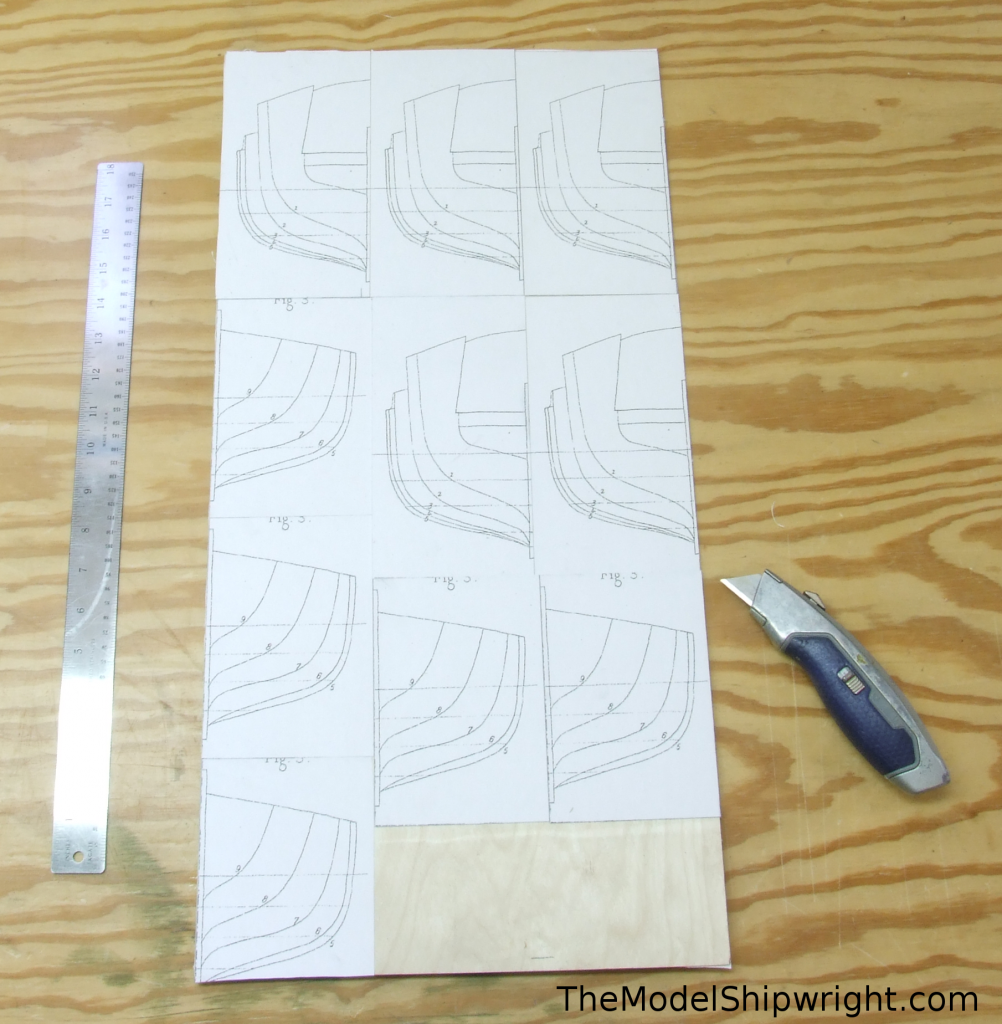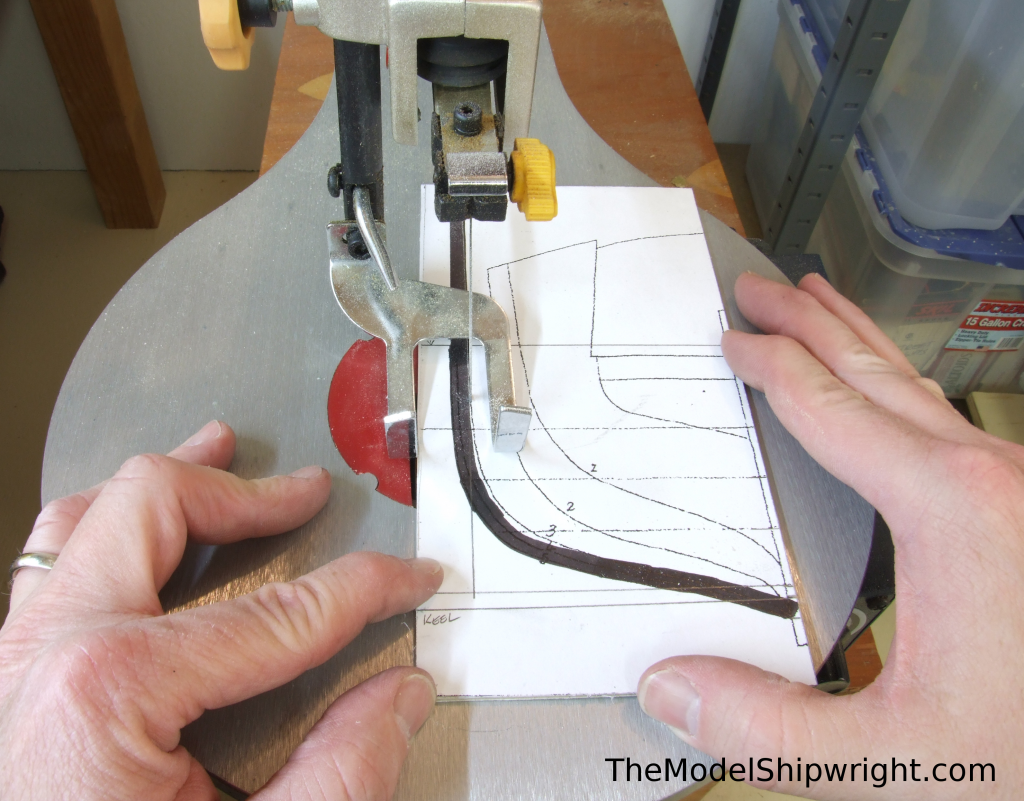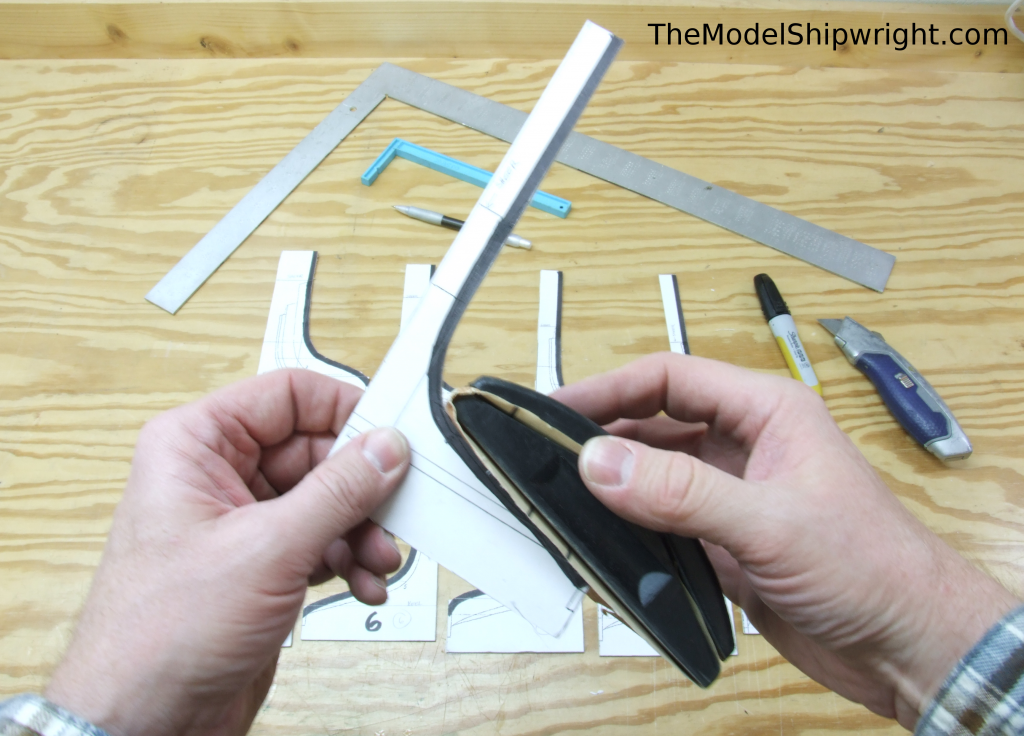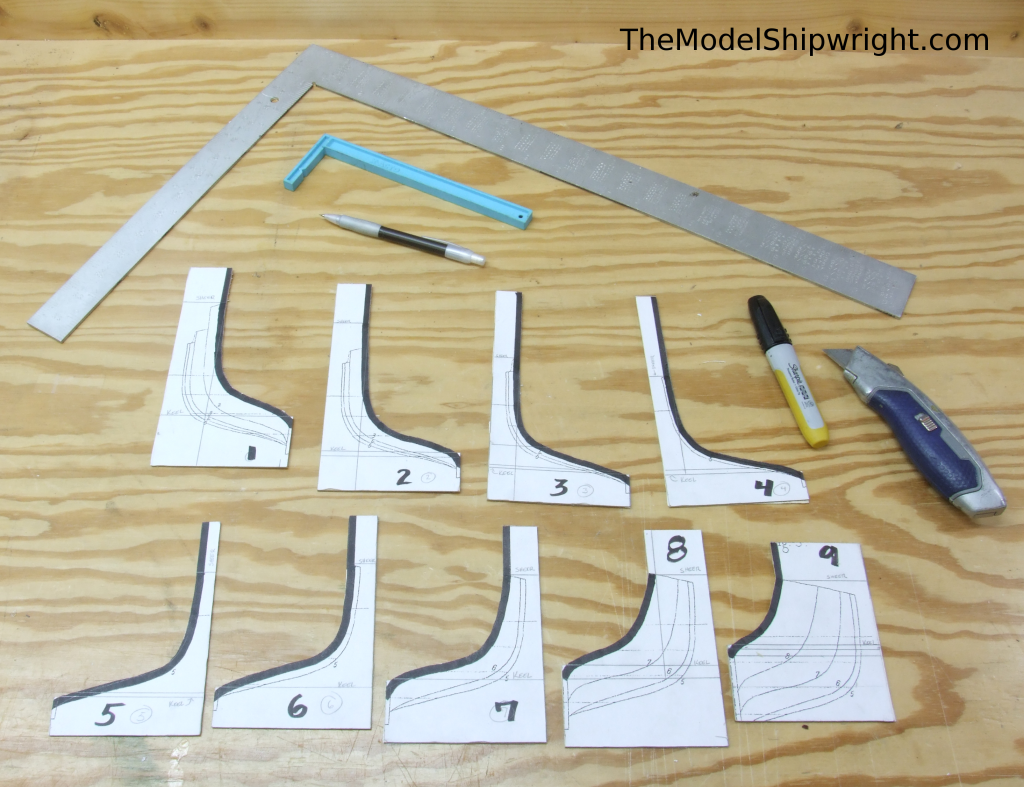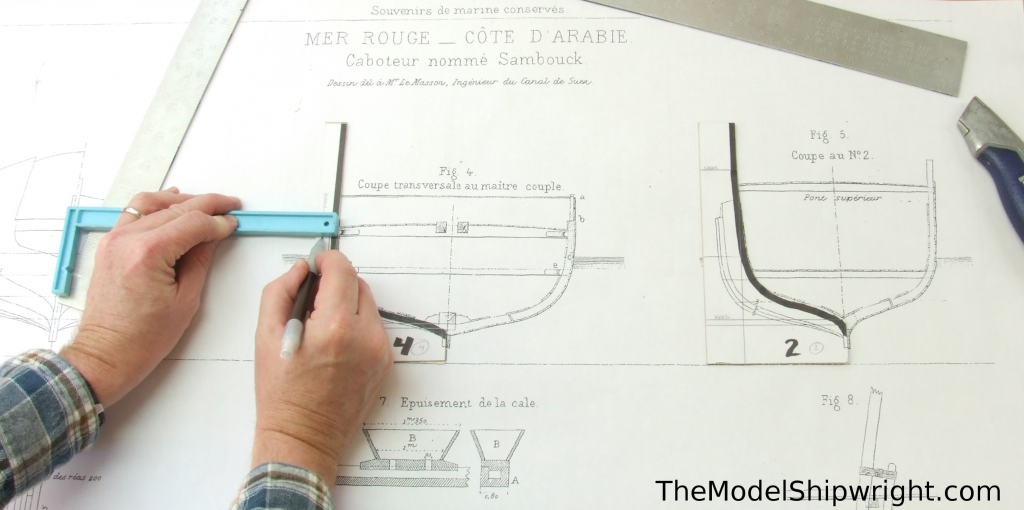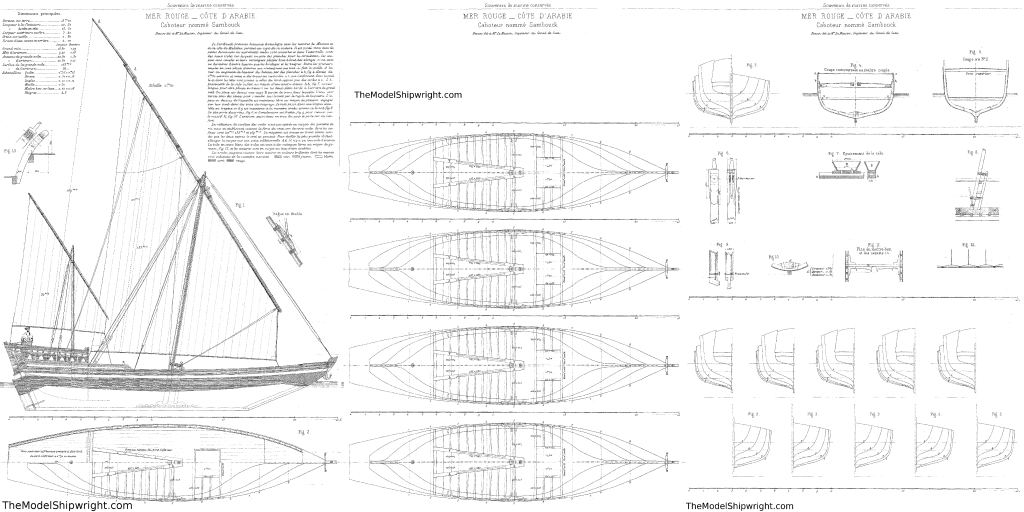Creating templates for shaping the hull from the section plan
Templates Help Measure Progress When Shaping a Model Ship Hull Using the Bread-and-Butter Scratch-Building Technique
Section Plans Provide a Wealth of Information on the Curves of a Ship’s Hull
On Page 1 of Building a Bread-and-Butter Solid Hull Ship Model, I described how to prepare the planks – called “lifts” by ship modelers – for a model of the Sambouk illustrated on plate 57 from French admiral François-Edmond Pâris’s work “Souvenirs de marine.”* We cut out the waterlines from the half-breadth plan, glued them to the planks, and created reference lines to align the planks when they are stacked up.
On Page 2 of Building a Bread-and-Butter Solid Hull Ship Model, I showed how to use dowels to keep the lifts aligned, sawed out the lifts to the shape of those waterline patterns we glued to the planks on Page 1, and glued them together. This gave us a rough step-sided hull for our Red Sea dhow.
On this page, we will use the section plan (sometimes called ‘body plan’) to create templates to use as a guide when shaping the hull to its final shape.
As a refresher to our article How to Read a Ship Plan, the section plan in Figure 26a illustrates the shape of the ship at a specific cross section, as if the hull was sliced like a loaf of bread. Because the curves on one side of the hull are identical to the other side, the section plan shows just one side – normally the sections from the “dead flat” aft to the stern on the left side of the center-line, and from the “dead flat” forward to the bow on the other side of the center-line. The dead flat is the widest point on the hull, where the frames are cut flat, rather than beveled like the rest of the hull frames. These sections have numbers or letters that correspond with positions marked on the half-breadth plan as shown in Figure 26b.
To create templates for measuring our progress in shaping the hull, I reproduced each half of the section plan enough times to cut one template to each section line, shown in Figure 26. I drew boxes around them to indicate the outside edges of the templates.
In Figure 27, I used a straight edge and hobby knife to cut out the paper templates.
On its own, the paper templates don’t have enough stiffness to be useful, or last very long. You can print them on cardstock to improve this, but I decided to mount them on 1/16” plywood. Plywood that thin, though, will curl if you just attach paper to one side. So, as in Figure 28, I sprayed the surface of the plywood with adhesive …
And placed it on the scrap paper left over at the top of the waterline cutting pattern page, as shown in Figure 29.
Then, in figure 30a, one-by-one, I sprayed adhesive on the back of each cut out section plan and in Figure 30, arranged them carefully on the other side of the plywood.
You will note that the template blanks made from the bow section lines are shorter than the stern template blanks. I cut them this way so that I could get them all on one piece of plywood. I also cut two section 5 template blanks since the line is on both bow and stern section plans and I wanted to check how accurate the curves were drawn on the plan.
The final result, shown in Figure 31, shows all the section plans glued down to the 12” x 24” piece of plywood. I placed them so the center-lines were against the edge of the plywood where I could, and aligned the other center-lines where I couldn’t use the edge of the plywood sheet. This made it much easier to cut the pieces apart with a heavy utilty knife, which could do the job in two passes.
Before I begin cutting, I always mark the line I plan on cutting on each template before starting, to keep from accidentally cutting more than one on the same line (yes, this is from experience). I also add a line to the outer edge of the template marking the point where the curve of the hull meets the edge of the keel, as well as the level water line and the top of the sheer. These lines should all be at a 90-degree angle from the hull centerline, and will help you see if you are holding the template at the right angle when checking the shape of the hull.
You can cut the patterns out with a coping saw, or even with multiple passes of a utility knife, but a scroll saw does a quick, accurate job, as shown in Figure 32. Just work slow to keep the scroll saw blade on the path you desire. On some curves you may have to back up slightly several times and readjust the angle of attack to cut the curve tight enough. Be sure to cut off the template square from the point the curve reaches the keel to the keel center-line. This part of the hull needs to be flat when you mount the keel to it later.
Unlike the waterlines, where you want to cut the planks outside the lines, then trim down to them, with the section templates, you want to cut inside the lines (between the line and the hull center-line) and sand out to them, as shown in Figure 33. I used my chisel-point marker to mark the lines here because I plan on using the final hull as a plug – or mold – to build a plank-on-frame model over it, and the width of the marker is the same as the combined width of my frames and planking. We’ll cover this technique in another article.
The final templates shown in Figure 34 need just a few more marks to help you establish the deck line.
As shown in Figure 35, use the cross sections from the plan to mark the position of the bottom of the main deck on templates 4 and 5 and the raised poop deck on template 2. The height of the sheer above the deck is pretty uniform, so you can use the distance between the sheer and deck marks on these templates to mark the deck height on the other templates. When you are done shaping the hull, these marks can be transferred onto it to show where you need to trim down to deck height. Later, we’ll also use the camber (curved shape of the top of the deck) in these two figures to create a deck with the right shape.
Now that we have our templates ready to go, on Page 4 we will mount the hull in the vise and start making sawdust and shavings.
Other Pages
Page 1
Page 2
Page 3
Page 4
Page 5
Page 6
*Our reprint Pâris’s work “Selected Plates from Souvenirs de Marine” can be ordered from Amazon here. For this project, we created three pages of plans and patterns from the original plan. We created cutting plans for the waterlines by duplicating the half-breadth plan and flipping it over to create a pattern showing the full breadth of each waterline. We also duplicated the section plan enough times to create each template needed in final shaping of the hull. Please use our Contact Page to let us know of your interest in purchasing these.
